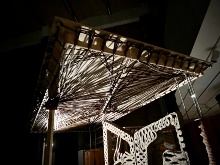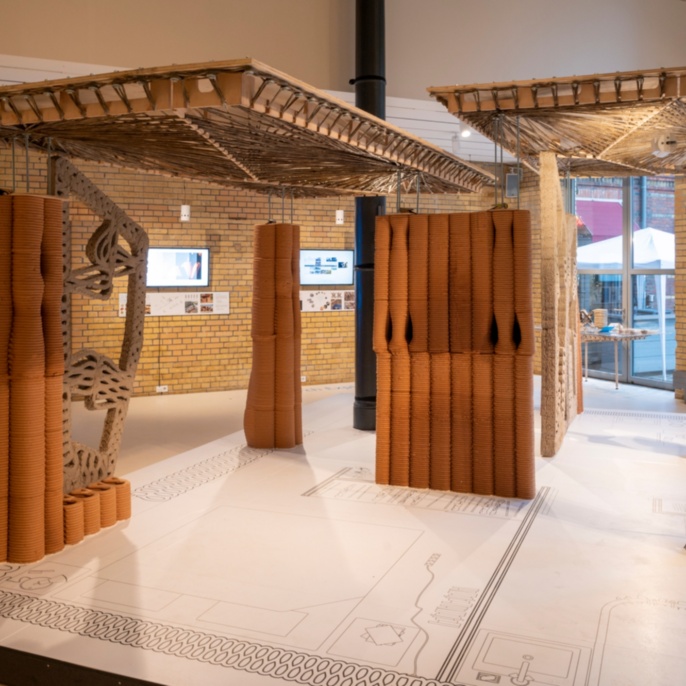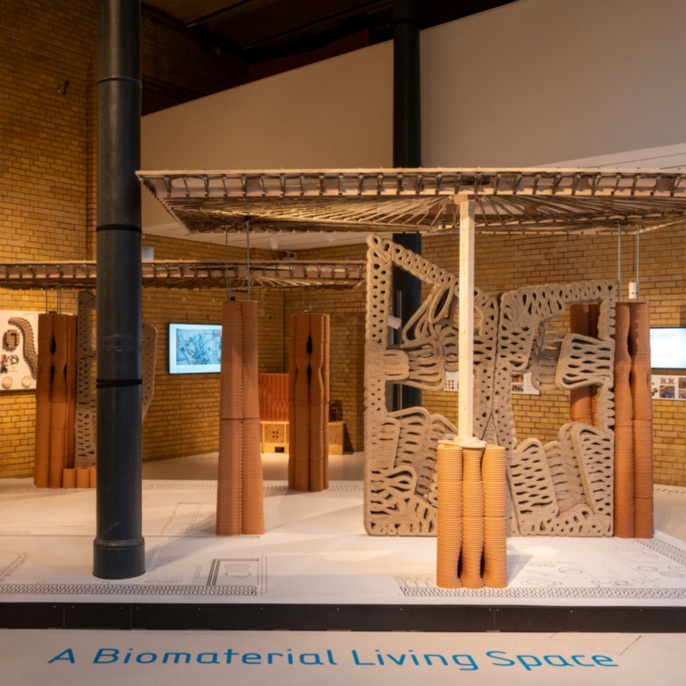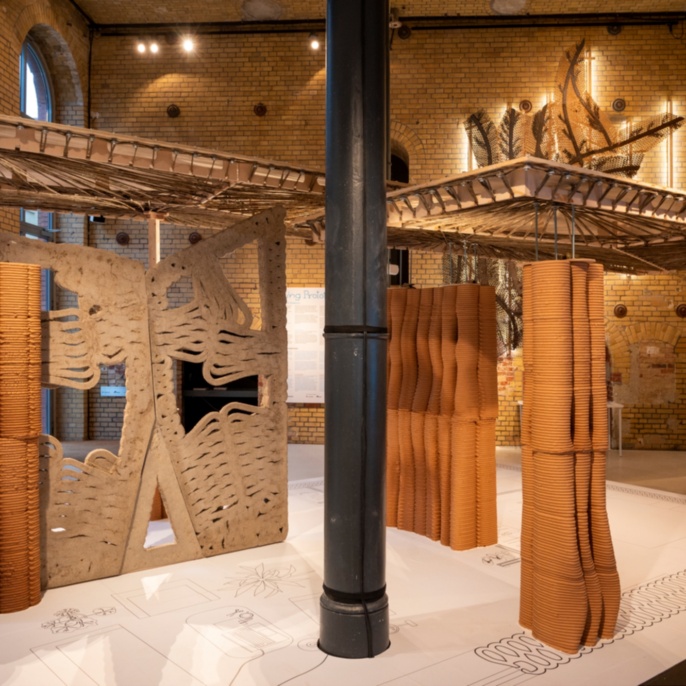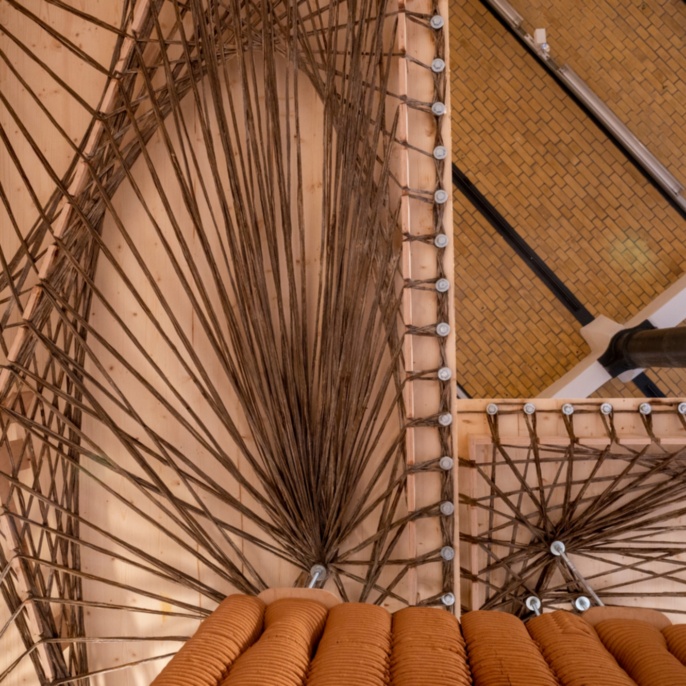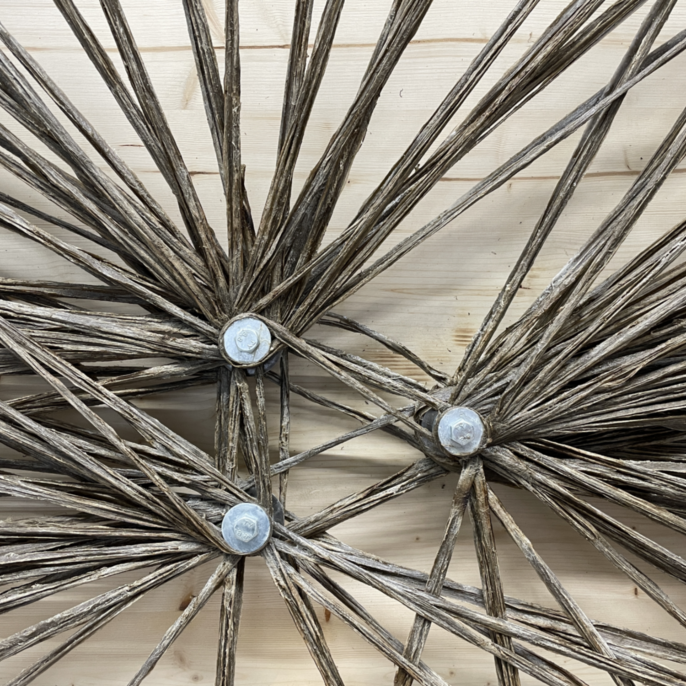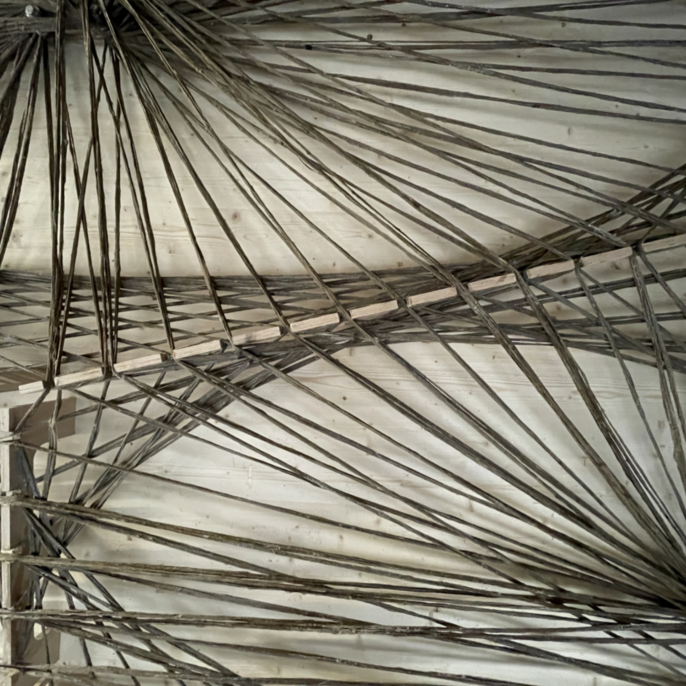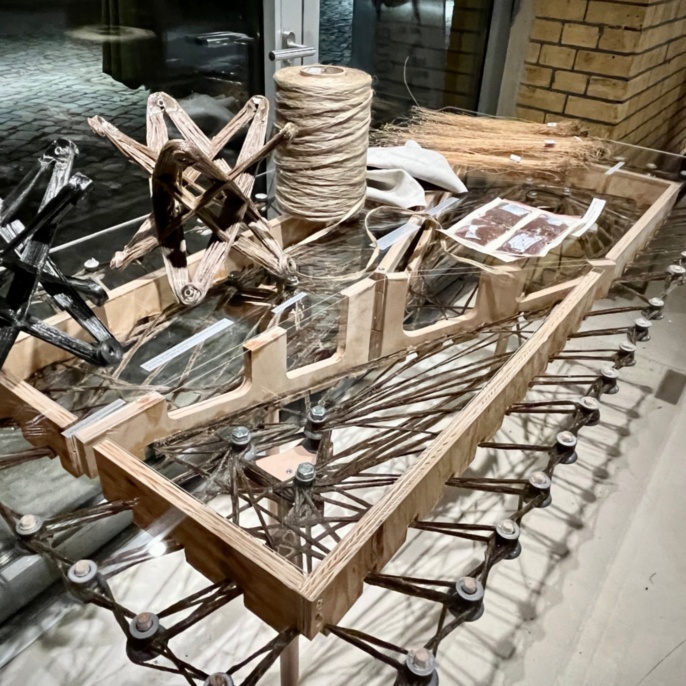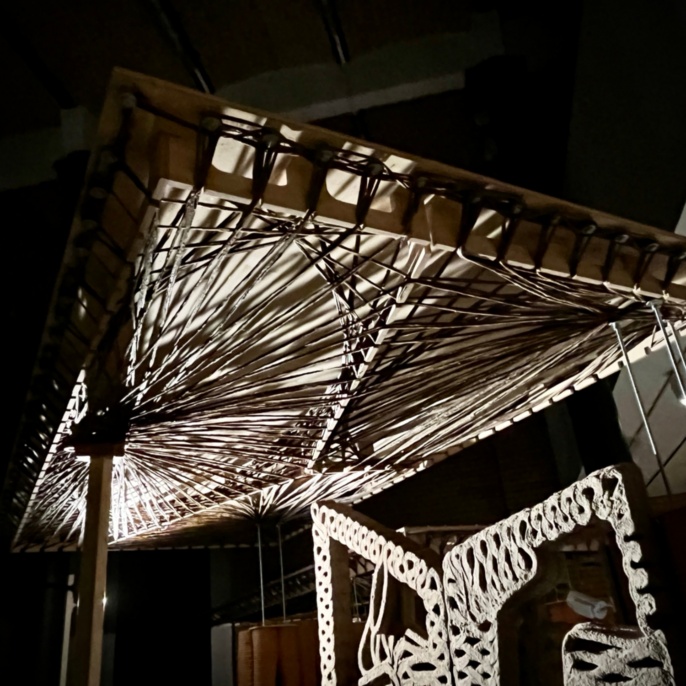Photographs by Tzu-Ying Chen, Ilaria Giacomini, and Erik-Jan Ouwerkerk
Living Prototypes, Berlin, "022
Living Prototypes was an ANCB research project on digitally fabricated prototypes for living spaces, using bio-based materials that were developed over 18 months by three teams of university and industry partners from Denmark, Germany, Italy and Spain. It was funded by the BBSR Zukunft Bau programme and culminated in an exhibition at Aedes Architecture Forum in 2022–23.
The outcomes of the Living Prototypes project are exhibited at Aedes Architecture Forum in Berlin from December 9 2022 until January 25, 2023 and discussed in a symposium on the day of the opening as well as this publication. In the exhibition, a 1:1-scale installation set in a typical floorplan of a Berlin apartment brings together the three separate prototypes. Contextual and supporting information includes visions for how biomaterials and digital fabrication methods might encourage a change in how we build and live in the future, as well as reflections on designing with bio-based materials and examples of further prototyping explorations by each research team.
The focus of ITKE – FibR research is to explore the morphologies of lightweight natural fibre structures using the technique of coreless filament winding. Over the past century, the construction industry has become one of the most material-intensive and environmentally detrimental human activities. Robotically fabricated composite structures reinforced with natural fibres offer a viable, resource-efficient alternative to conventional construction methods and therefore represent an important step towards sustainability in architecture. Fibre composites exhibit an outstanding strength-to-weight ratio, and this feature provides an excellent basis for the development of innovative, material-efficient lightweight structures. Novel co-design processes that account concurrently for geometrical, material, structural, productional, environmental and aesthetic requirements, together with advanced robotic fabrication techniques applied to natural materials, are capable of generating a unique architecture that is at the same time ecological and expressive.
Through integrating the concept of widely used lightweight suspended systems, the hybrid structure was able to direct forces through the fibre system mainly in tension, increasing the global structural efficiency, hence reducing material usage and machining hours. The overall structural system design strategy allowed for the use of off-shelf average-quality three-ply plates (Dreischichtplatten), which were seldom put to service as the main load-bearing element. On the detail level, in order to accommodate various out-of-plane winding angles, a new winding pin geometry was designed and tested in the project. Past studies showed that the overall structure tends to fail at joint locations, where the fibre bundle gets kinked on the edge of the pins when incoming and outgoing fibre directions are less perpendicular to the pin axis. The results of the project proved that lesser fibres were kinked with the new pin design. Further structural tests are required to verify the improvement in performance. On the fabrication side, the pre-assembled timber structure also served as the winding frame, avoiding the need of building additional steel frames. This increases the geometry flexibility of the structure, allowing for the possibility of varying element sizes, depth and anchor positions within one single fabrication setup.
Bringing research understandings on the material level, the interface level and the structure system level together with fabrication considerations, the project aimed not just on designing a prototype for exhibition, but further on the development of a design-to-fabrication workflow. The structure demonstrates the possibility of a variable point-supported, multi-way spanning slab system. Integrating the system to vertically supporting earth walls and cellulose panels, design iterations were tested through the workflow, optimizing user space, structural efficiency as well as fabricability. Through expanding the understanding of bespoke aspects in this ongoing research, we see the potential of further exploring the design space and structural expression beyond existing textures and typologies.
Project Team
ITKE University of Stuttgart, Institute of Building Structures and Structural Design
Prof. Dr.-Ing. Jan Knippers
Tzu-Ying Chen, Nikolas Früh, Marta Gil Pérez
Student Assistance: Andre Aymonod, Ioannis Moutevelis
FibR GmbH, Kernen
Moritz Dörstelmann, Ilaria Giacomini, Christo van der Hoven, Julian Fial
In collaboration with:
ANCB The Aedes Metropolitan Laboratory, Berlin
CITA – Centre for Information Technology and Architecture, Copenhagen
COBOD International A/S, Copenhagen
IAAC – Institute for Advanced Architecture of Catalonia, Barcelona, Spanien
WASP, Massa Lombarda


